Abstract
The effect of mechanical impedance on ethylene evolution and growth of preemergent maize (Zea mays L.) seedlings was investigated by pressurizing the growth medium in triaxial cells in a controlled environment. Pressure increased the bulk density of the medium and thus the resistance to growth. The elongation of maize primary roots and preemergent shoots was severely hindered by applied pressures as low as 10 kilopascals. Following a steep decline in elongation at low pressures, both shoots and roots responded to additional pressure in a linear manner, but shoots were more severely affected than roots at higher pressures. Radial expansion was promoted in both organs by mechanical impedance. Primary roots typically became thinner during the experimental period when grown unimpeded. In contrast, pressures as low as 25 kilopascals caused a 25% increase in root tip diameter. Shoots showed a slight enhancement of radial expansion; however, in contrast to roots, the shoots increased in diameter even when growing unimpeded. Such morphological changes were not evident until at least 3 hours after initiation of treatment. All levels of applied pressure promoted ethylene evolution as early as 1 hour after application of pressure. After 1 hour, ethylene evolution rates had increased 10, 32, 70, and 255% at 25, 50, 75, and 100 kilopascals respectively, and continued to increase linearly for at least 10 hours. When intact corn seedlings were subjected to a series of hourly cycles of pressure, followed by relaxation, ethylene production rates increased or decreased rapidly, illustrating tight coupling between mechanical impedance and tissue response. Seedlings exposed to 1 microliter of ethylene per liter showed symptoms similar to those shown by plants grown under mechanical impedance. Root diameter increased 5 times as much as the shoot diameter. Pretreatment with 10 micromolar aminoethoxyvinyl glycine plus 1 micromolar silver thiosulfate maintained ethylene production rates of impeded seedlings at basal levels and restored shoot and root extension to 84 and 90% of unimpeded values, respectively. Our results support the hypothesis that ethylene plays a pivotal role in the regulation of plant tissue response to mechanical impedance.
Full text
PDF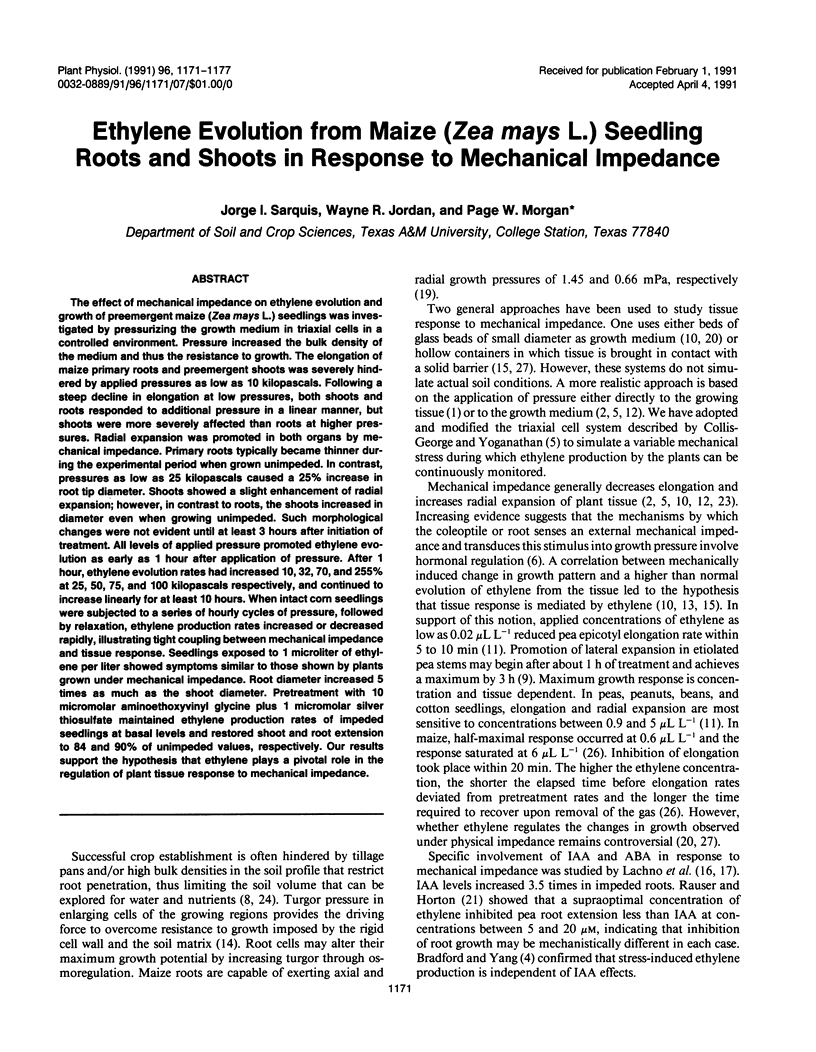
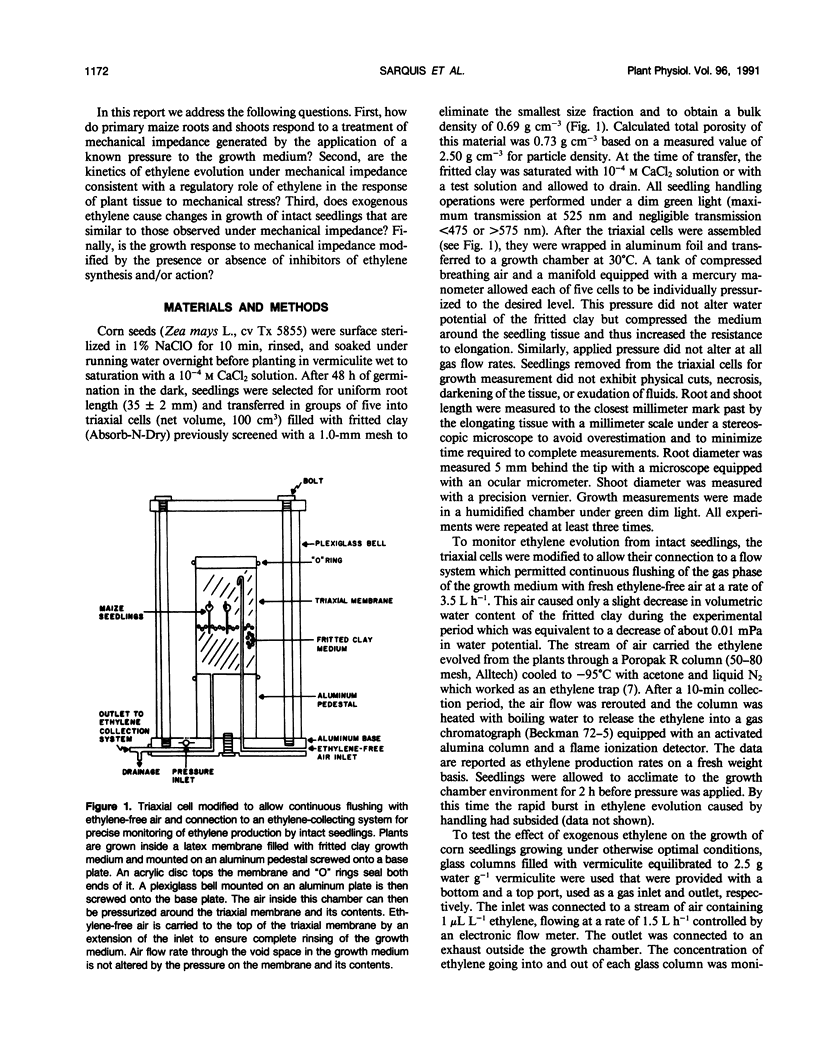
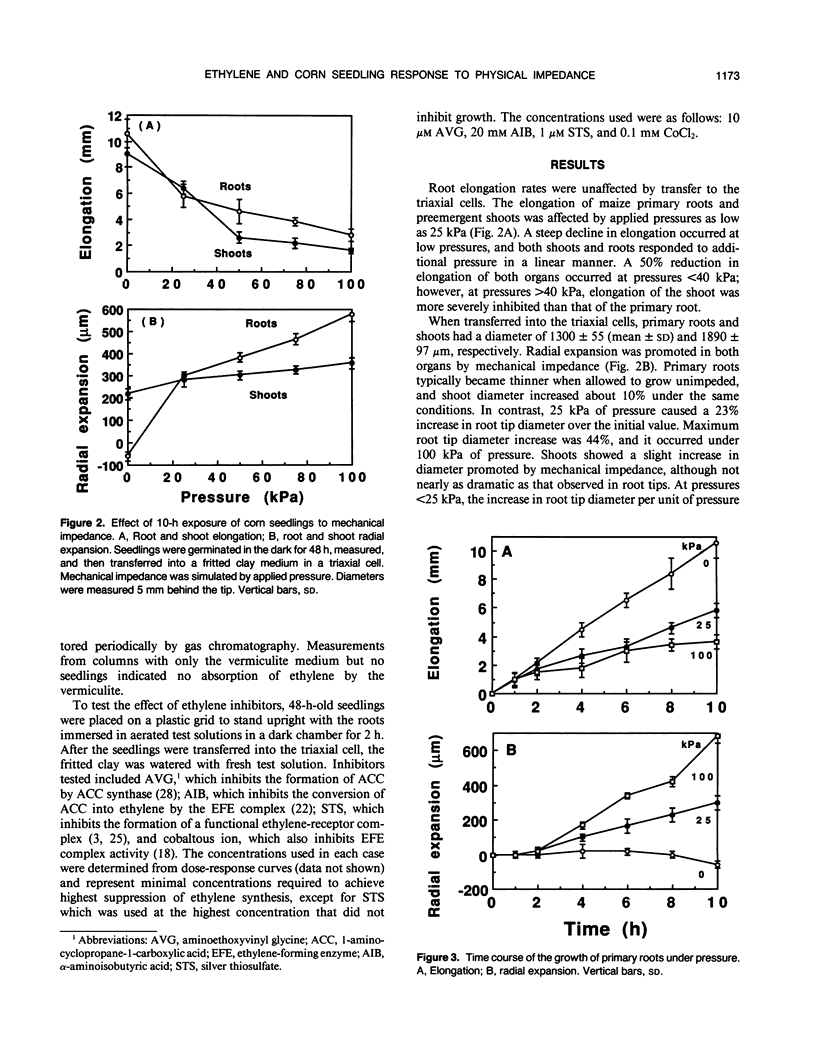
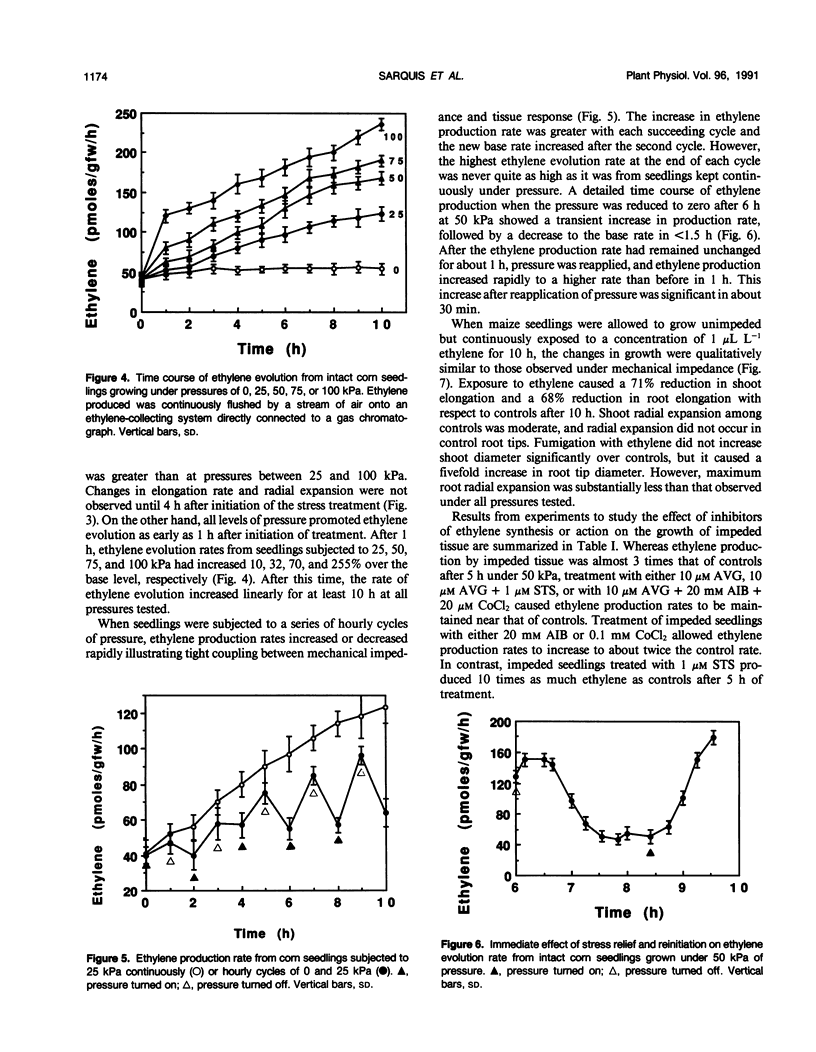
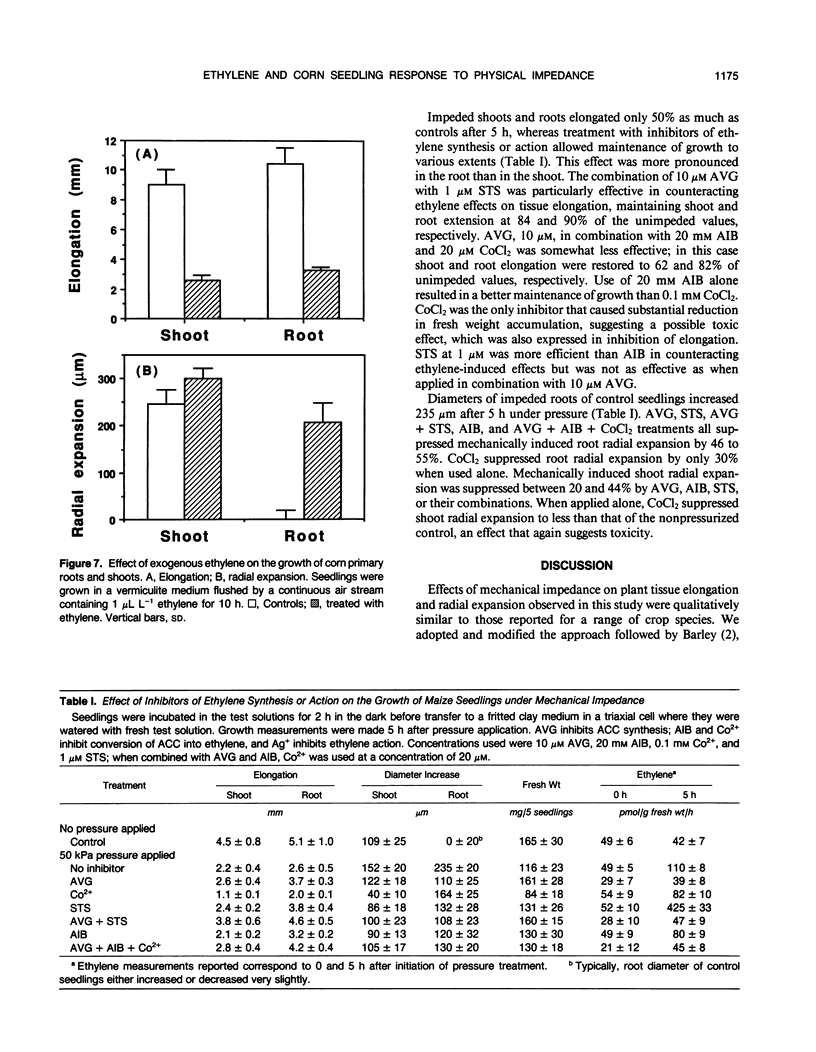
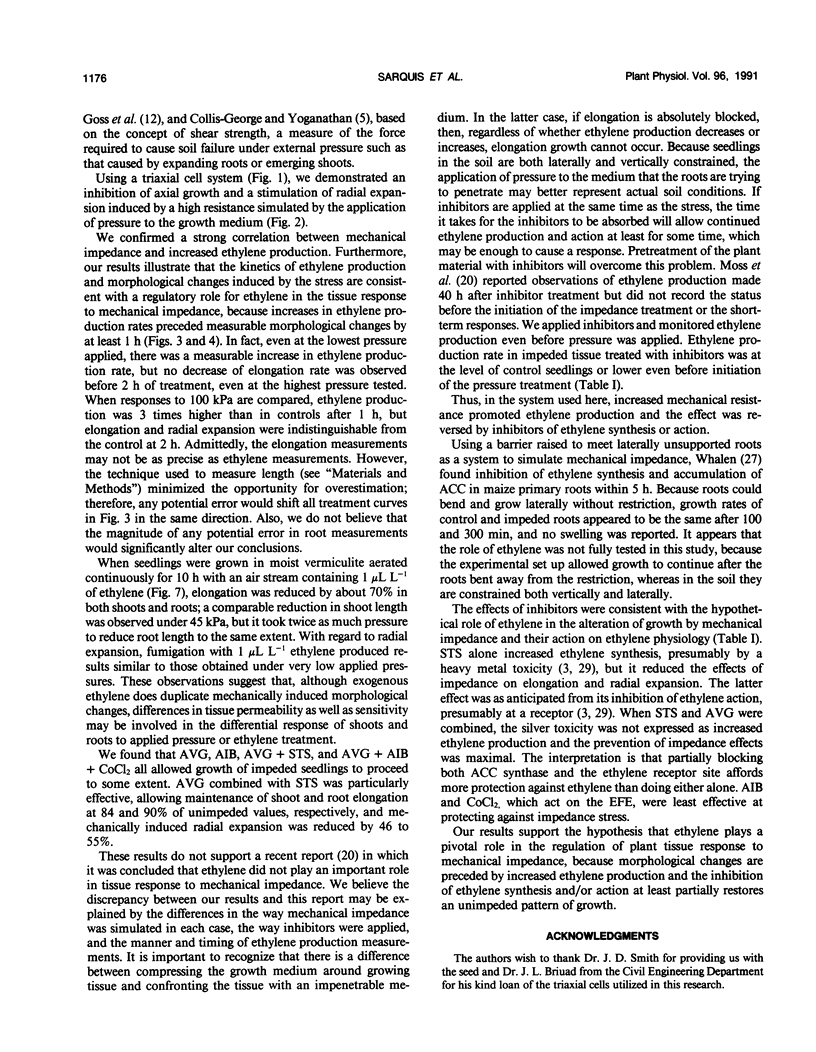
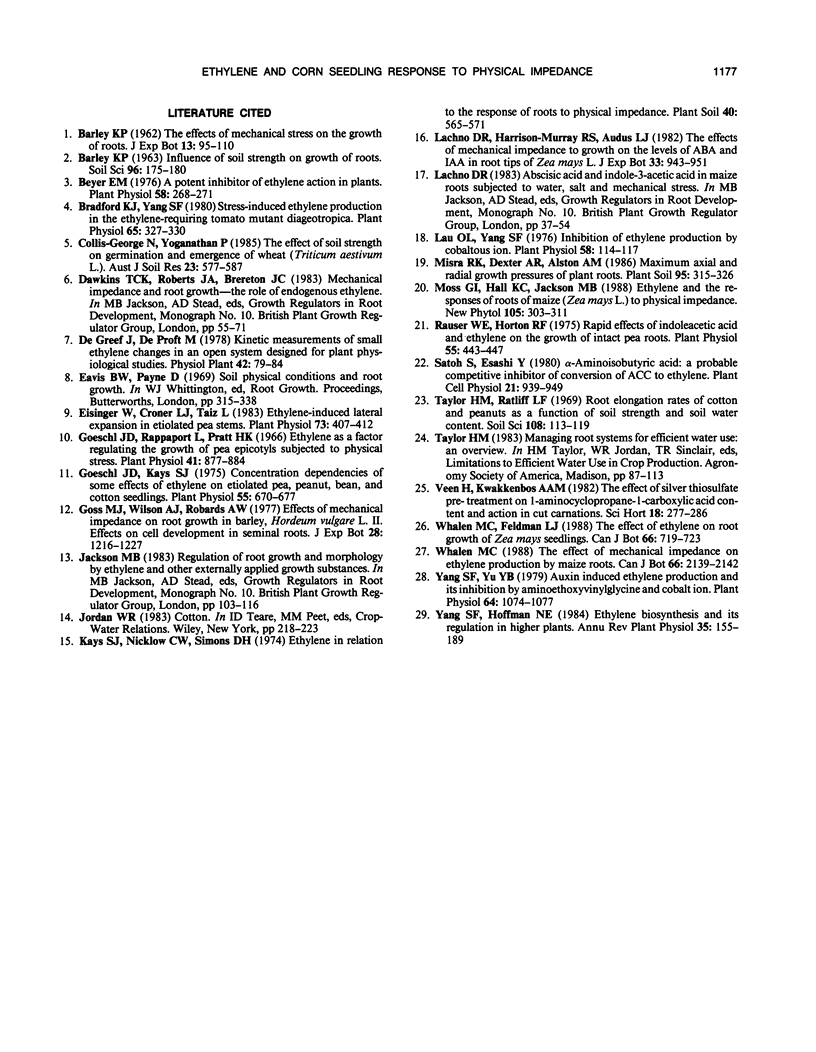
Selected References
These references are in PubMed. This may not be the complete list of references from this article.
- Beyer E. M. A potent inhibitor of ethylene action in plants. Plant Physiol. 1976 Sep;58(3):268–271. doi: 10.1104/pp.58.3.268. [DOI] [PMC free article] [PubMed] [Google Scholar]
- Bradford K. J., Yang S. F. Stress-induced Ethylene Production in the Ethylene-requiring Tomato Mutant Diageotropica. Plant Physiol. 1980 Feb;65(2):327–330. doi: 10.1104/pp.65.2.327. [DOI] [PMC free article] [PubMed] [Google Scholar]
- Eisinger W., Croner L. J., Taiz L. Ethylene-induced lateral expansion in etiolated pea stems : kinetics, cell wall synthesis, and osmotic potential. Plant Physiol. 1983 Oct;73(2):407–412. doi: 10.1104/pp.73.2.407. [DOI] [PMC free article] [PubMed] [Google Scholar]
- Goeschl J. D. Concentration dependencies of some effects of ethylene on etiolated pea, peanut, bean, and cotton seedlings. Plant Physiol. 1975 Apr;55(4):670–677. doi: 10.1104/pp.55.4.670. [DOI] [PMC free article] [PubMed] [Google Scholar]
- Goeschl J. D., Rappaport L., Pratt H. K. Ethylene as a factor regulating the growth of pea epicotyls subjected to physical stress. Plant Physiol. 1966 May;41(5):877–884. doi: 10.1104/pp.41.5.877. [DOI] [PMC free article] [PubMed] [Google Scholar]
- Lau O. L., Yang S. F. Inhibition of ethylene production by cobaltous ion. Plant Physiol. 1976 Jul;58(1):114–117. doi: 10.1104/pp.58.1.114. [DOI] [PMC free article] [PubMed] [Google Scholar]
- Rauser W. E., Horton R. F. Rapid effects of indoleacetic Acid and ethylene on the growth of intact pea roots. Plant Physiol. 1975 Mar;55(3):443–447. doi: 10.1104/pp.55.3.443. [DOI] [PMC free article] [PubMed] [Google Scholar]
- Whalen M. C., Feldman L. J. The effect of ethylene on root growth of Zea mays seedlings. Can J Bot. 1988 Apr;66(4):719–723. doi: 10.1139/b88-104. [DOI] [PubMed] [Google Scholar]
- Yu Y. B., Yang S. F. Auxin-induced Ethylene Production and Its Inhibition by Aminoethyoxyvinylglycine and Cobalt Ion. Plant Physiol. 1979 Dec;64(6):1074–1077. doi: 10.1104/pp.64.6.1074. [DOI] [PMC free article] [PubMed] [Google Scholar]


